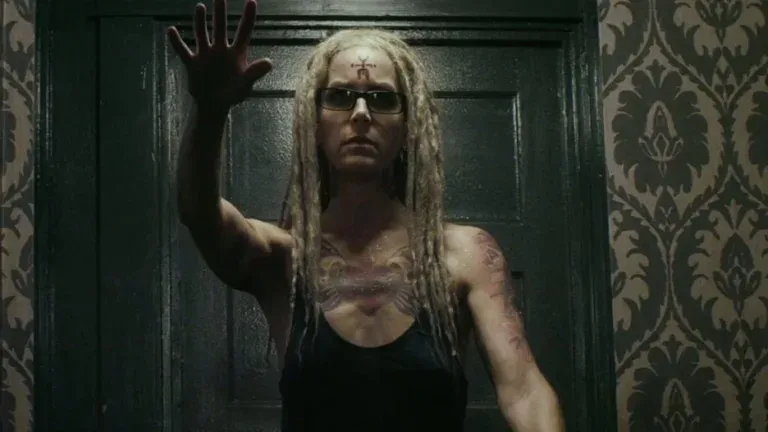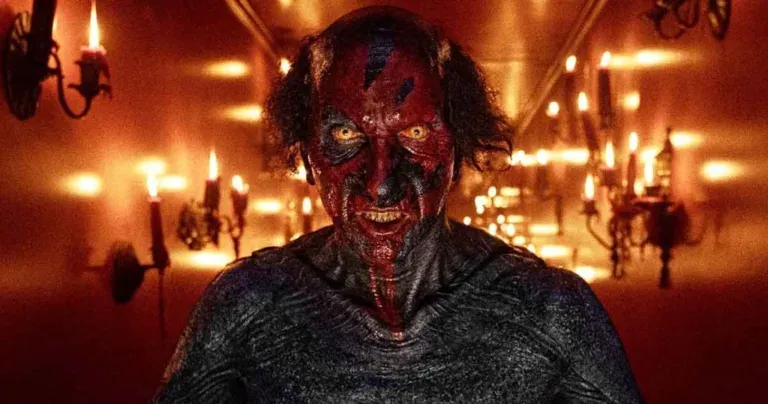Bram Stoker’s Dracula
 Bram Stoker’s Dracula by Francis Ford Coppola (1992)
Bram Stoker’s Dracula by Francis Ford Coppola (1992)
Young lawyer Jonathan Harker is sent to Transylvania to assist Count Dracula in purchasing properties in various locations around London.
Quote
Your men, powerless with their foolish charms, will not protect you from my power. I condemn you to eternal hunger for vital blood and to living death.
(Dracula)
 A New Dracula
A New Dracula
There is a specific image, paired with a phrase, that gives this film a special place in the collective memory. Count Vlad, ecstatically whispering sweet words of love to his beloved Mina. A poignant declaration, made even more powerful by the protagonist’s sensual yet funeral gaze. Words that defy the passage of centuries and the liters of blood spilled, and all the horror caused by the same prince and men. Words that sound enchanting and make us fall in love with that macabre and unsettling character, yet so human and fragile, showing for the first time his vulnerability in the search for an impossible love.
“I have crossed oceans of time to find you.”
Considerations
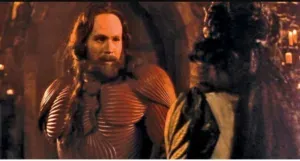 Francis Ford Coppola creates a film that follows Stoker’s novel while introducing new elements. His Dracula fully embraces the melodramatic romance. We are far from the exclusively monstrous figure, hungry for blood and the innocence of young women—a characterization that has appeared in countless films since the dawn of cinema. I am referring, of course, to Murnau’s 1922 film, primarily a landmark for the horror genre. But not only that, many other productions have developed this character since then. Consider the versions portrayed by Bela Lugosi, Christopher Lee, Klaus Kinski, Frank Langella. All notable and worthy of mention, all aimed at depicting a terrifying character, a vampire who hates the light and loves darkness, the prince of darkness.
Francis Ford Coppola creates a film that follows Stoker’s novel while introducing new elements. His Dracula fully embraces the melodramatic romance. We are far from the exclusively monstrous figure, hungry for blood and the innocence of young women—a characterization that has appeared in countless films since the dawn of cinema. I am referring, of course, to Murnau’s 1922 film, primarily a landmark for the horror genre. But not only that, many other productions have developed this character since then. Consider the versions portrayed by Bela Lugosi, Christopher Lee, Klaus Kinski, Frank Langella. All notable and worthy of mention, all aimed at depicting a terrifying character, a vampire who hates the light and loves darkness, the prince of darkness.
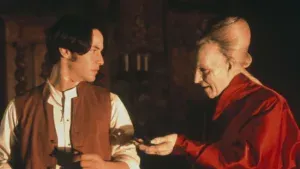 Bram Stoker’s Dracula does otherwise. It shows us the human side of the most famous Count in the history of horror cinema. From the beginning, in that wonderful prologue overflowing with images linked to Expressionism and Romanticism, a substantial difference is noticeable. Prince Vlad is not portrayed as an evil character but as a man driven by the devastating events he experiences toward the abyss. Darkness, indeed, sucks him against his will after discovering that his beloved Elisabeta has committed suicide, believing him dead in battle. The transformation becomes even more evident when the Count sees Mina, and his primary desire becomes to love. We are thus faced with something opposed to what Dracula represented in the collective imagination. We have a new figure, an empathetic vampire, made of passion and instinct and damnedly human.
Bram Stoker’s Dracula does otherwise. It shows us the human side of the most famous Count in the history of horror cinema. From the beginning, in that wonderful prologue overflowing with images linked to Expressionism and Romanticism, a substantial difference is noticeable. Prince Vlad is not portrayed as an evil character but as a man driven by the devastating events he experiences toward the abyss. Darkness, indeed, sucks him against his will after discovering that his beloved Elisabeta has committed suicide, believing him dead in battle. The transformation becomes even more evident when the Count sees Mina, and his primary desire becomes to love. We are thus faced with something opposed to what Dracula represented in the collective imagination. We have a new figure, an empathetic vampire, made of passion and instinct and damnedly human.
In this sense, Bram Stoker’s Dracula is revolutionary and has greatly contributed to developing a new cinematic image of the vampire. The film had a significant impact on the portrayal of vampires in popular culture and contributed to a revival of interest in vampire stories in the 1990s. It influenced many subsequent vampire narratives, both in cinema and television.
 Bram Stoker’s Dracula is also known for its distinctive visual style, characterized by elaborate sets, lavish costumes, and innovative use of special effects. Coppola employed traditional filmmaking techniques, such as optical tricks and image overlay, to create a gothic and unsettling atmosphere.
Bram Stoker’s Dracula is also known for its distinctive visual style, characterized by elaborate sets, lavish costumes, and innovative use of special effects. Coppola employed traditional filmmaking techniques, such as optical tricks and image overlay, to create a gothic and unsettling atmosphere.
The film received generally positive reviews from both critics and audiences. It was praised for its fidelity to the original material, Gary Oldman’s performance as Dracula, and Coppola’s visually rich direction. However, some critics criticized the performances of Keanu Reeves and Winona Ryder for their accents and acting.
Bram Stoker’s Dracula won three Academy Awards in 1993: Best Costumes, Best Makeup, and Best Sound Editing.

Subscribe to our YouTube channel

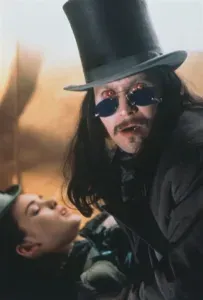 A New Dracula
A New Dracula


